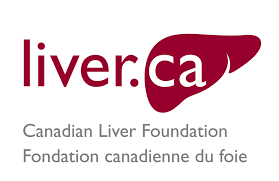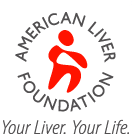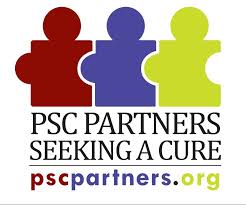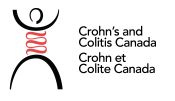RESOURCES
CIRRHOSIS PATIENT TEACHING
Cirrhosis:
What is Cirrhosis: Cirrhosis is the end stages of a liver disease. Over time, from years to decades, fibrosis (or scar tissue) progresses through stages while your liver attempts to repair itself. Eventually, if left untreated, fibrosis replaces normal liver tissue and eventually results in cirrhosis.
Please download the attached document.
PDF DOWNLOAD
CIRRHOSIS PATIENT TEACHING
COLONOSCOPY PREPARATION INSTRUCTIONS
Please download to answer any questions you may have about the preparation for your procedure.
PDF DOWNLOAD
GASTROSCOPY PREPARATION INSTRUCTIONS
colonoscopy
Please download to answer any questions you may have about the preparation for your procedure.
PDF DOWNLOAD
GASTROSCOPY PREPARATION INSTRUCTIONS
Dr. Stinton's GASTROENTEROLOGY/HEPATOLOGY HEALTH QUESTIONNAIRE
Please download and complete prior to your appointment.
PDF DOWNLOAD
GASTROENTEROLOGY/HEPATOLOGY HEALTH QUESTIONNAIRE
Adjusting Your Diabetes Medicine and Diet for a Gastroscopy or EGD (Esophagogastroduodenoscopy)
Please download and complete prior to your appointment.
PDF DOWNLOAD
Adjusting Your Diabetes Medicine and Diet for aGastroscopy or EGD (Esophagogastroduodenoscopy)
Adjusting your Diabetes Medicine and Diet for Barium Enema/colon
Please download and complete prior to your appointment.
PDF DOWNLOAD
Adjusting Your Diabetes Medicine and Diet fora Barium Enema or Colonoscopy
NON-ALCOHOLIC FATTY LIVER DISEASE (NAFLD) INFORMATION
In some people, the fat can irritate the liver, which causes inflammation. Most people do not have any symptoms of this irritation, other than an occasional pain on the right side of their abdomen. Often, someone is diagnosed with NAFLD when routine bloodwork shows that their liver tests are high.
When there is evidence of liver irritation or inflammation due to the fat in the liver, this is called NASH (non-alcoholic steatohepatitis). Having NASH puts you at higher risk for developing further liver injury, scar tissue within the liver (fibrosis), or even developing cirrhosis. People with fatty liver are also at a three-times higher risk for developing heart disease than people without fatty liver.
Just as fat accumulates in other areas of the body, fat can accumulate within the liver. When this occurs, this is considered to be a medical condition, and is termed “fatty liver”, or NAFLD (non-alcoholic fatty liver disease).
NAFLD often develops in people who have diabetes, high cholesterol, high blood pressure, or who are overweight. Occasionally, certain medications can cause NAFLD or NASH.
Eating foods that are high in fat, high sugar (especially high fructose corn syrup or corn sugar), and leading a sedentary lifestyle are some of the biggest risks for developing fatty liver.
Since NAFLD and NASH are so closely associated with obesity and diabetes, NAFLD is poised to become the leading cause of liver transplantation in North America over the next decade.
Patients with NASH are at risk for progressing to cirrhosis (where the liver is replaced by scar tissue), developing heart disease, strokes, and cancers. Although having diabetes is one of causes of developing fatty liver, having fatty liver actually increases your risk of developing diabetes down the road, if you don’t have the diagnosis initially!
Therefore, having fatty liver affects the health of your entire body, not just your liver. Treating the fatty liver is thought to decrease your risk of developing all of these diseases.
Based on the tests that you have completed for us (bloodwork, liver stiffness measurement), you do not have any evidence of scarring in your liver. Although there is no test can state with 100% accuracy that your liver is not scarred, the combination of multiple tests helps us to say that the likelihood of scarring in your liver is very low
The Fibroscan® ® reading is a measure of liver stiffness. The stiffness of the liver can be increased by scar tissue, inflammation, or significant fat within the liver. Your liver stiffness has been found to be within the normal range for fatty liver. Many studies that have been conducted worldwide have shown that the patients at highest risk for developing scarring and cirrhosis are those patients who have inflammation or scarring in their liver during their first visit to their liver doctor.
With a normal Fibroscan® , it is highly unlikely that you have any significant degree of scarring within your liver, meaning that you are unlikely to progress IF you treat your fatty liver disease.
HOW DO I TREAT MY FATTY LIVER?
Treating NAFLD and NASH means treating your risk factors that caused you to develop fatty liver.
If you have diabetes or high cholesterol, treating these (either through diet, medications, or both) is key, to both helping the fatty liver come under control, as well as decreasing your risk of developing heart disease and cancers.
Eating a balanced diet that is high in fibre and oily fish, and low in fatty/greasy/high sugar foods, as well as exercising a minimum of 150 minutes a week will help move fat out of the liver, and prevent further fat deposition within the liver. Studies have shown that exercise, as long as it increases your heart rate, regardless of associated weight loss, has been demonstrated to decrease the amount of fat within your liver.
Weight loss of 7-10% over a year has been shown in all studies to decrease fat in the liver, liver irritation/inflammation, as well as, in some studies, reversing damage or scarring already in the liver.
Unfortunately, there are no medications, at this time, that are geared specifically to treating NAFLD and NASH. As mentioned above, treating your diabetes or high cholesterol with medication is certainly helpful in preventing further damage to your liver. Statins, a class of medications used to treat high cholesterol, has been shown in numerous studies to not only be safe in patients with fatty liver, but also to decrease fat within the liver, and to decrease your risk of developing a heart attack or stroke.
Yes, you can, but in moderation. We recommend no more than 4-5 drinks a week for men, and 3-4 drinks a week for women. Any more than this, and you can cause further injury to the liver, putting you at risk for liver injury and failure.
PDF DOWNLOAD
NON-ALCOHOLIC FATTY LIVER DISEASE (NAFLD) INFORMATION

CANADIAN LIVER FOUNDATION
Bringing Liver Research To Life

AMERICAN LIVER FOUNDATION
Your Liver, Your Life.

PSC FOUNDATION
Seeking a cure
OTHER RESOURCES
Links to valuable websites and associations.

PBC FOUNDATION
Reaching for the cure

CANADIAN CELIAC FOUNDATION
Resources for people who need to eat gluten free

CROHNS AND COLITIS
Make it stop, for life
HAVE QUESTIONS?
Call us at (403) 455-7872




